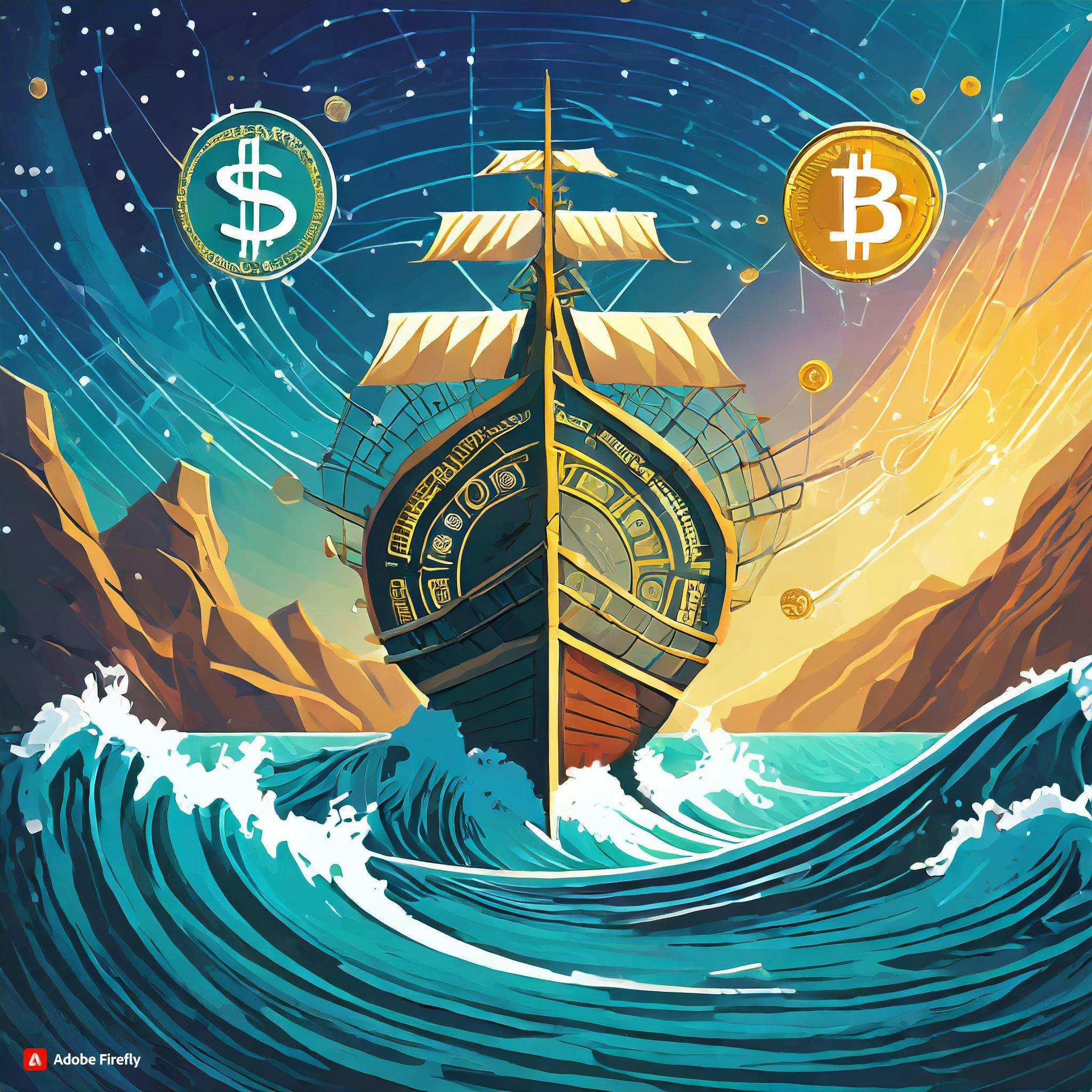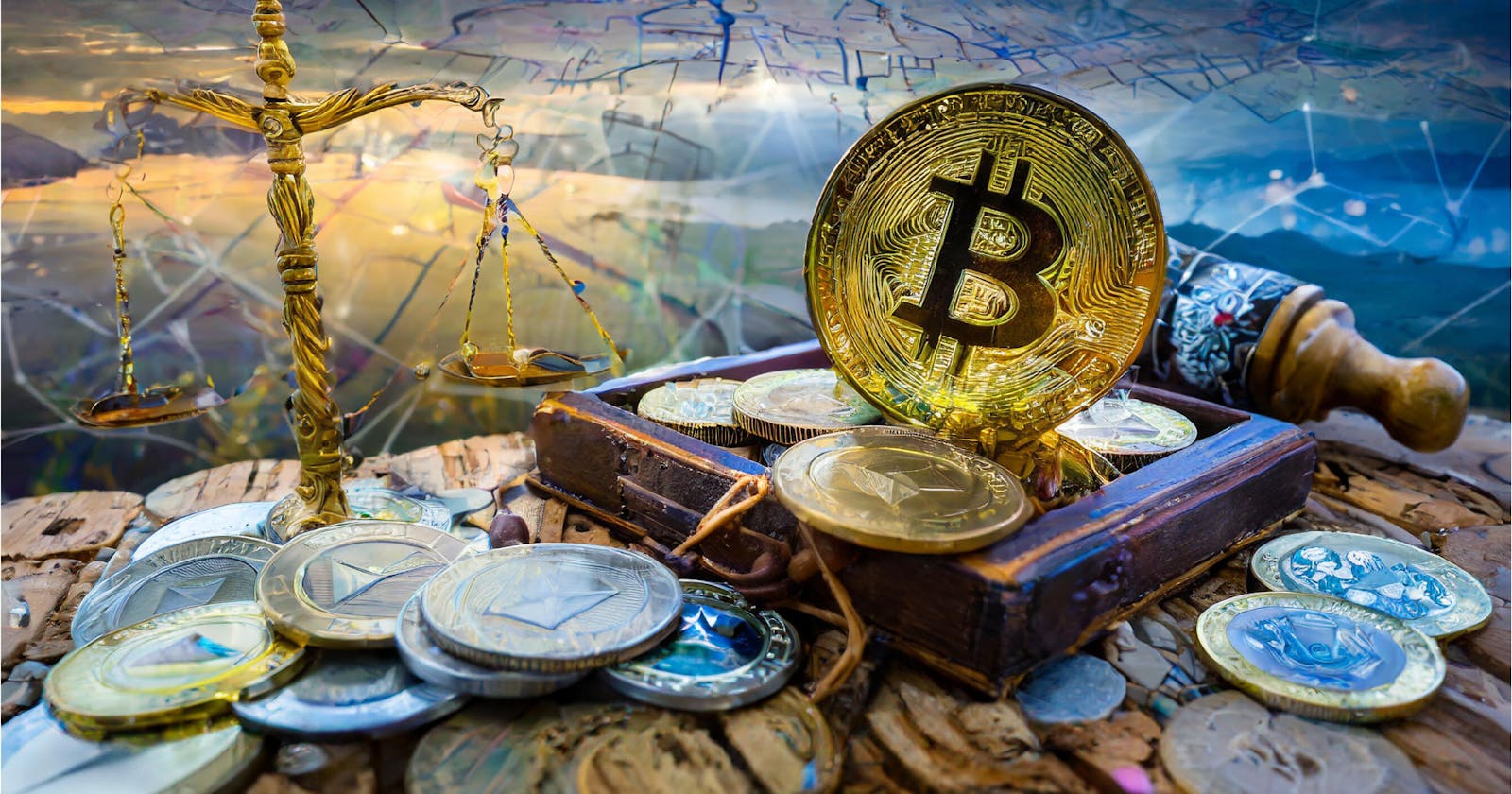Beyond USDC: Exploring EURC and the Future of Stablecoins
Dive into stablecoin innovation with EURC and INRC, shaping the future of digital assets and finance
Disclaimer: The following article is based on publicly available information and personal interpretations. The views expressed here are solely those of mine.
Introduction
Cryptocurrencies have revolutionized the financial landscape, introducing digital assets that transcend geographical boundaries. At the forefront of this digital revolution are stablecoins, providing a stable bridge between traditional currencies and the dynamic realm of cryptocurrencies. One stablecoin that has stood tall in this space is USDC by Circle, firmly tethered to the mighty US dollar. Yet, as we sail through the seas of volatility, it's time to question whether USDC alone can chart the entire course of the stablecoin universe. Circle, the company behind USDC, has introduced Euro Coin (EURC), the first stablecoin backed by the euro. This article delves into the limitations of relying solely on USDC, explores the unique features of EURC, and envisions the future possibilities and challenges for stablecoins.
The Limits of Relying on USDC

USDC, like a sturdy ship, has successfully navigated the unpredictable waters of the cryptocurrency market. Backed by the reliable US dollar, it has offered a safe heaven for investors seeking stability amidst the turbulent swings of Bitcoin and other cryptocurrencies. However, with its dominance, certain limitations become apparent. This section unravels the complexities associated with a single dominant stablecoin, emphasizing the risks and challenges that arise. Diversification within the stablecoin ecosystem becomes paramount, and this sets the stage for exploring alternatives like EURC.
Limited Reach: USDC primarily caters to the American market, leaving vast regions such as the eurozone and India yearning for a stablecoin that resonates with their local currencies.
Hedging Opportunities: While stability is a commendable trait, the absence of a diversified stablecoin landscape limits investors' ability to hedge against US dollar fluctuations, potentially hindering their risk management strategies.
Financial Inclusion: In economies where the US dollar holds less influence, the reliance on USDC may impede financial inclusion. Local stablecoins could act as bridges, facilitating cashless transactions for the underbanked.
Enter EURC - Tailoring Stability for the Euro
As we venture across the Atlantic, the euro tells its own economic story. Here, EURC steps onto the stage as a stablecoin meticulously designed to dance to the rhythm of the eurozone. Euro Coin, introduced by Circle, marks a significant shift in the stablecoin landscape by specifically catering to the euro. EURC operates on the full-reserve model, meaning its stability is directly tied to the strength of its reserves, maintaining a 1:1 peg with the euro.
This section explores the intricacies of designing stablecoins for specific currencies, understanding how EURC provides stability and facilitates seamless transactions within the eurozone. The full-reserve model adds an extra layer of security and transparency, addressing concerns raised by the recent challenges faced by other stablecoins.
Wider Reach: EURC opens doors for the 340 million residents of the eurozone, enabling seamless cross-border transactions and fostering economic integration within the region.
Hedging against the Dollar: For investors cautious of US dollar dominance, EURC offers a safe haven, allowing them to hedge against potential fluctuations and diversify their portfolios.
Boosting European Fintech: EURC has the potential to fuel the engine of European fintech innovation. It can drive cashless adoption, paving the way for new financial products and services tailored to the needs of the European market.
Challenges and Considerations for EURC
However, EURC's journey is not without hurdles. Compared to the well-established USDC, EURC is a young entrant in the stablecoin forest. Establishing its track record of stability and garnering widespread adoption will require time, effort, and a commitment to navigating the evolving cryptocurrency landscape, this section explores the hurdles faced by stablecoins.
The regulatory landscape, still in its nascent stages for cryptocurrencies, adds a layer of complexity. As regulations evolve, they could significantly impact EURC's growth and operational dynamics. Additionally, the inherent vulnerabilities of any digital asset, including potential hacking and technical glitches, necessitate robust security measures and contingency plans.
INRC: A Dream for India?

Looking ahead, the exploration extends to the possibility of witnessing the emergence of stablecoins backed by other currencies. One intriguing possibility discussed is the introduction of an INR-backed stablecoin, potentially named INRC, for India. This forward-looking section delves into the potential benefits such a digital currency could bring to India's financial ecosystem. It addresses regulatory landscapes, technological requirements, and broader implications for financial inclusion, sparking curiosity about the role stablecoins might play in shaping the future of global finance.
Financial Inclusion: An INR stablecoin could empower millions of unbanked Indians, providing access to financial services like microloans and savings through a digitized ecosystem.
Boosting Fintech Innovation: The introduction of an INR stablecoin has the potential to fuel the Indian fintech revolution, driving cashless adoption, fostering cross-border trade, and promoting financial literacy.
Hedging against the Dollar: For Indian investors and businesses, INRC could offer a hedge against the US dollar, mitigating currency fluctuations and safeguarding their financial interests.
Challenges and Considerations for INRC
While the dream of an INR stablecoin is alluring, the road ahead is paved with challenges. India's regulatory stance towards cryptocurrencies remains uncertain, and obtaining approvals while navigating regulatory complexities could pose significant delays or obstacles to the launch of INRC. Due to compliance issues, India has recently imposed a ban on several leading exchanges, including Binance, OKX, Kucoin, and others.
Building a robust technical infrastructure for an INR stablecoin, including secure exchanges and wallets, requires substantial investment and expertise. Gaining the trust of Indian consumers, many of whom remain wary of cryptocurrencies, is crucial for the success of any INR-based stablecoin.
Conclusion: Embracing Diversity in Stablecoins
In conclusion, this article serves as a guide to understanding the limitations of relying solely on USDC and the importance of diversifying stablecoin options. From the euro-centric perspective with EURC to the potential expansion into the Indian market with INRC, the dynamics explored underscore the crucial role stablecoins play in the cryptocurrency ecosystem. As the world of digital assets continues to evolve, embracing a variety of stablecoins tailored to specific currencies emerges as a pivotal strategy for unlocking new possibilities and ensuring a robust and inclusive financial future.
The introduction of EURC signals a new era in stablecoins, one that goes beyond the limitations of existing options and opens doors to a more diversified and resilient ecosystem. As technology advances and regulatory landscapes evolve, the future of stablecoins promises exciting possibilities, fostering financial inclusion, regional integration, and innovative financial products across the globe. Circle's foray into the euro-backed stablecoin realm with EURC is a testament to the continuous evolution and adaptability of the cryptocurrency market.

